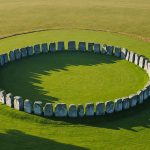Vatican City, a marvel of religious and artistic heritage, offers more than just stunning architecture. Experience the profound spirituality woven through its sacred halls and treasures. From the awe-inspiring Sistine Chapel to the grandeur of St. Peter’s Basilica, each corner reveals a story waiting to unfold. Equip yourself with essential insights to make the most of your visit and truly appreciate this unique enclave steeped in history.
Must-See Attractions in Vatican City
For travelers seeking a blend of rich history, awe-inspiring architecture, and cultural significance, Vatican City is an unparalleled destination. As you dive into its iconic landmarks, such as St. Peter’s Basilica, the Vatican Museums, and the Sistine Chapel, planning your visit can make the difference between a rushed experience and a truly fulfilling one. An excellent resource like https://visitvatican.info/ can help you uncover the right insights to navigate these extraordinary sites efficiently.
Additional reading : Unlocking the uk: essential strategies for effortless travel on the rail network during your cultural heritage journey
St. Peter’s Basilica: A Marvel of Architectural Grandeur
St. Peter’s Basilica, one of the world’s most recognized religious sites, epitomizes opulence and spiritual tranquility. Designed by legendary architects including Michelangelo and Gian Lorenzo Bernini, this basilica offers an interplay of Renaissance and Baroque art that will leave you speechless. Highlights include climbing to the dome for unparalleled views of Vatican City and beyond, the revered Baldachin Altar by Bernini, and Michelangelo’s emotional depiction of Mary and Jesus in the Pietà statue. To avoid peak crowds, consider visiting early in the morning or shortly before closing.
Sistine Chapel: A Timeless Masterpiece
The Sistine Chapel is synonymous with Michelangelo’s renowned ceiling fresco, “The Creation of Adam,” which has captivated art enthusiasts and casual visitors for centuries. The frenetic yet divine details of “The Last Judgment” on the altar wall further highlight Michelangelo’s unparalleled artistry. Since photography and loud chatter are prohibited, the chapel offers a space for quiet reflection on human creativity and spirituality. Plan your visit as part of a Vatican Museums itinerary to ensure a smooth flow through this popular site.
Also read : Uncover the best guided experiences in the uk”s enchanting historic market towns
The Vatican Museums: A Treasure Trove of Art and History
The Vatican Museums’ 70,000-piece collection encompasses ancient relics, Renaissance paintings, and modern sculptures. Iconic highlights include the stunning Raphael Rooms, the Gallery of Maps, and the spiral Bramante Staircase. Due to the museum’s vast layout, efficient navigation is essential. Booking a guided tour or using a digital audio guide ensures access to hidden gems and historical context. Allocate at least three hours to immerse yourself fully in this cultural haven.
Efficiency Tips for Your Visit
- Book Tickets in Advance: The Vatican draws millions of visitors annually. Reserving skip-the-line tickets online saves you hours of wait time.
- Dress Code Awareness: Modest attire is a must; avoid sleeveless tops, shorts above the knee, and revealing clothing, as Vatican guards strictly enforce these guidelines.
- Optimal Timing: Midweek mornings and late afternoons tend to have fewer crowds, but even during peak hours, efficient navigation tools and pre-booked tours help mitigate the hustle.
- Guided Tours vs. Self-Exploration: Guided tours provide deep insights into art and history but can feel rushed. If you prefer a paced experience, opt for self-guided tours with an audio guide.
A seamless journey through Vatican City is defined by preparation, pacing, and the ability to appreciate the subtleties of these timeless attractions. Whether you’re an art enthusiast, history buff, or spiritual seeker, Vatican City promises discoveries that will resonate long after your visit.
Exploring Vatican City: History and Cultural Significance
Historical Overview of Vatican City
The history of Vatican City is deeply entwined with its role as the spiritual and administrative center of the Catholic Church. Officially recognized as an independent city-state in 1929, the Vatican’s roots stretch back to the 4th century AD, when Emperor Constantine commissioned the construction of St. Peter’s Basilica atop the purported burial site of Saint Peter. This laid the foundation for the Vatican’s enduring association with the Papacy and its influence on Christianity.
Centuries later, the history of the Papacy shaped the Vatican into a hub of religious, political, and cultural significance. During the Renaissance, an era of immense creativity, the Vatican transformed into a repository of artistic and architectural genius. This was when artists such as Michelangelo, Raphael, and Bernini contributed to its legacy, elevating its status as a cultural beacon. The Lateran Treaty of 1929 formally established Vatican City as a sovereign entity, cementing its governance under the Pope and ensuring religious autonomy.
Architectural Styles and Landmarks
Vatican City’s architectural wonders showcase a blend of styles spanning centuries, reflecting the city’s evolving history and its pivotal role as a center for art and faith. St. Peter’s Basilica, an iconic masterpiece of Renaissance and Baroque architecture, embodies this rich heritage. Adorned with Michelangelo’s dome and Bernini’s grandiose St. Peter’s Square, the basilica serves as both a spiritual haven and a magnificent visual spectacle.
Another striking landmark is the Sistine Chapel, celebrated for its intricate frescoes. Michelangelo’s ceiling and “The Last Judgment” are world-renowned treasures that exemplify the convergence of religious devotion and artistic brilliance. Beyond these monumental marvels, the Apostolic Palace and the Vatican Gardens highlight a blend of historical preservation and serene beauty. Visitors can marvel at features ranging from medieval fortifications to manicured paths adorned with rare flora.
Importance of Art and Religion in Vatican City
Few places in the world rival Vatican City’s art collections and their significance in illustrating faith, history, and human ingenuity. The Vatican Museums, spanning multiple galleries, offer a glimpse into millennia of art, from ancient Roman sculptures to contemporary creations. Highlights include the Raphael Rooms, where the painter’s mastery comes to life in pieces like “The School of Athens,” and the Gallery of Maps, which charts the geographic imagination of the 16th century.
Art and religion are inseparable here, as evidenced in the very layout and purpose of these spaces. The Vatican houses works not merely as aesthetic achievements but as expressions of divine inspiration and theological narratives. This deep integration underscores the Vatican’s role not only as a religious epicenter but also as a steward of cultural heritage—preserving masterpieces that transcend time, denomination, and nationality.
Practical Tips for Visiting Vatican City
Navigating to and Within Vatican City
Getting to Vatican City is remarkably straightforward. Located in the heart of Rome, it is accessible via multiple transportation options. Public transport is often the most practical choice. The Rome Metro Line A stops at Ottaviano-San Pietro and Cipro stations, which are a short walking distance from the entrance to Vatican City. Buses such as route 64 also connect key parts of Rome to Vatican City. If you prefer a more direct route, taxis can drop you at Piazza San Pietro.
Once inside Vatican City, exploration on foot is essential, as the compact state is pedestrian-only. Walking allows you to soak in the architecture and ambiance of landmarks like St. Peter’s Square and the Vatican Museums. For a more structured experience, consider guided tours, which not only provide historical insights but also help visitors navigate the extensive Vatican Museums without missing highlights like the Sistine Chapel.
Best Times and Days for Your Visit
Timing is everything when visiting Vatican City. To avoid large crowds, it’s best to visit during the off-peak season, typically November to February. However, if you plan to travel during peak months, weekdays, particularly Tuesdays and Thursdays, tend to be less crowded compared to weekends and Mondays.
Early mornings are ideal for touring highlights such as St. Peter’s Basilica and the Vatican Museums. Arriving as soon as they open ensures shorter queues and a quieter environment for appreciating the art and architecture. Attending a Papal audience can be an extraordinary experience, and these are held on Wednesdays when the Pope is in residence. While tickets are free, they need to be reserved in advance and typically attract significant crowds.
Insider Tips for a Memorable Experience
- Dress code is a crucial consideration. Make sure to wear modest clothing that covers shoulders and knees, as access to religious sites like the Sistine Chapel and St. Peter’s Basilica requires appropriate attire. While jeans are generally acceptable, avoid overly casual or revealing outfits.
- Booking tickets online in advance is highly recommended. Skip-the-line tickets are particularly useful for the Vatican Museums and Sistine Chapel, allowing you to maximize your time.
- Opting for either an early-morning tour or evening museum access (on select days) can provide a relaxed atmosphere and let you appreciate the details of Vatican treasures without feeling rushed.
- For those intrigued by the Vatican’s mysteries, guided tours might include fascinating anecdotes about iconic pieces or even provide access to less-frequented areas like the Vatican Gardens, usually closed to the general public.
- Lastly, allocate adequate time. The Vatican is dense with history, art, and spirituality, so rushing through might mean missing highlights such as Raphael’s Rooms or Michelangelo’s Pietà. Dedicate at least half a day for your visit, or a full day if you wish to explore thoroughly.
By planning strategically and respecting the cultural and historical significance of Vatican City, you can ensure a rich, rewarding visit.











